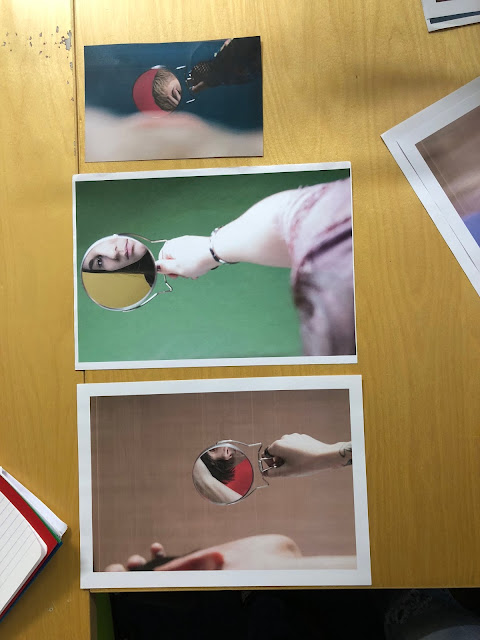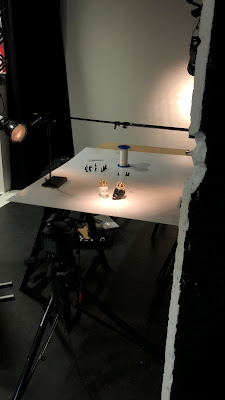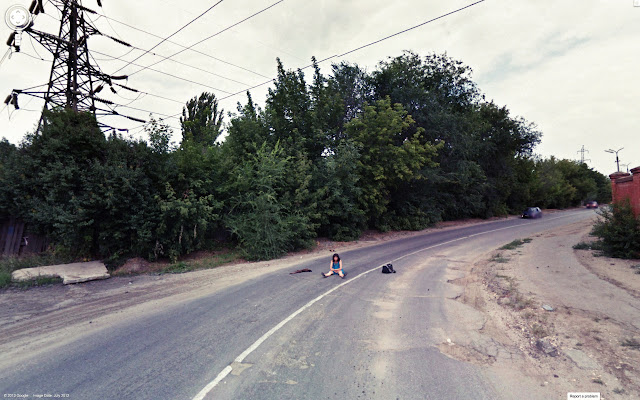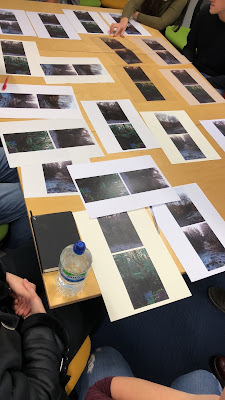Feedback from Liam.

Today, Liam gave me feedback on my Final Major Project - I felt like I really needed this as I had done something completely new as I had experimented with using something that wasn't a mirror and therefore had changed my project slightly and progressed quite a bit. I am going to write down what Liam told me in note form, but go into detail where I feel it is necessary: The images have a surreal/poppy vibe. The newer images could be used as chapter breaks to stop the images from being too repetitive. Look at the book "People in trouble laughing pushed to the ground" by Broomberg and Chanarin. Generational. Recognition of oneself. The idea that the mirror does not equal reality. Fractured self. Notion of perception. It is genuinely unusual. The images where I have shot through card look like they could be appropriated imagery - looks as though there has been a tear in space/time, they are dynamic. The images represent the notion of deception: the angle of the










